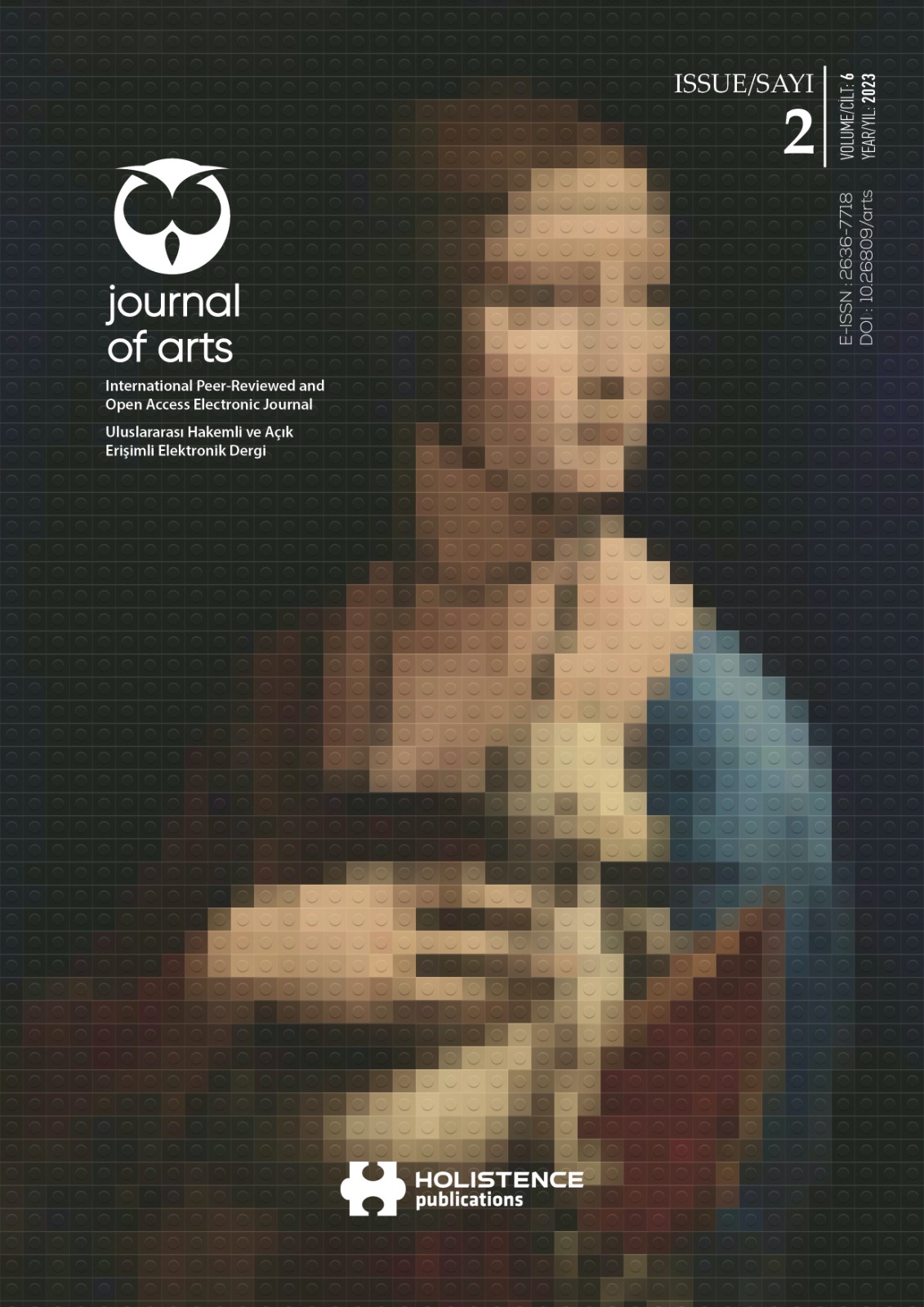Abstract
As a new art form of a new world that technology has changed and transformed, new media art and other forms of creation associated with it have different stages of development in different countries. Questions such as the development of this form in Turkish art, the visibility of the artists working in this field in the international art field, what qualities the created works have and what stages they have passed through to capture the current digital identity (aesthetics) have not yet been fully clarified in the literature. In this context, the research takes an important role in filling the gap in the literature by chronologically addressing this change process in Turkish art and analyzing the progress of new media art from past to present. In accordance with this purpose; first of all, the relationship between modern art and contemporary art and the changing dimensions of cultural structure are examined. In this context, new media arts and digitalized art creations, which exist as a new form of contemporary/contemporary art, are included in the research through the development of the screen phenomenon and analyzed. In the continuation of the research, the development of new media in Turkey, the pioneering steps taken in this context, the first exhibitions, different creation mechanisms, collaborations in the formation process, alternatives for exhibition strategies are analyzed. Then, the development of new media and the process of change in institutions and institutional structures are discussed in two different aspects in terms of the exhibition process of the work and the creation process, and the collaborations of different disciplines in the creation process of digital art are examined with examples from the world and Turkey. The research, in which the foundations of the change between contemporary and modern art are analyzed through new media art and digitalized art creations, is a qualitative research using the relational analysis method and the analyzed works are included in the research with purposeful element sampling.
References
BELTING, H. (2020). Sanat Tarihinin Sonu, Modernizmden Sonra Sanat Tarihi. İstanbul: İletişim Yayınları.
BALSOM, E. (2017). Dreamlands: Immersive Cinema and Art, 1905-2016. https://www.artforum.com/print/reviews/201701/dreamlands-immersive-cine-ma-and-art-1905-2016-65393 (Erişim: 02.02.2023).
BASLAR, G. (2013). Yeni Medyanın Gelişimi ve Dijitalleşen Kapitalizm. Akademik Bilişim 2013 – XV. Akademik Bilişim Konferansı Bildirileri, 23-25 Ocak 2013, Akdeniz Üniversitesi, Antalya.
BENIGER, J. (1986). The Control Revolution: Technological and Economic Origins of the Information Society.Cambridge: Harvard University Press.
BELL, D. (1974). The Coming of Post-Industrial Society.New York: Basic Books.
CASTELLS, M. (1996). The Rise of the Network Society: The Information Age, Economy, Society and Culture. London: Blackwell Publishing.
CASTELLS, M. (2005). Enformasyon Çağı: Ekonomi, Toplum ve Kültür, Ağ Toplumunun Yükselişi (Çev. E. Kılıç). İstanbul: Bilgi Üniversitesi Yayınları.
COPPER, Z. (2022). The Future of Art: 8 Digital Installations and Interactive Spaces. https://architizer.com/blog/inspiration/collections/digital-art-projection-installations/ (Erişim: 02.02.2023).
ERKAYHAN, Ş. & BELGESAY, M. Ç. (2014). Teknoloji ve Sanatın Etkileşimi: Yeni Medya Sanatı Türkiye’de Güncel Durum ve Öneriler. Gazi Sanat ve Tasarım Dergisi, 1(14): 45-62.
ERTAN, E (2015). Dijital Sonrası Tarihçeler: Türkiye’de Yeni Medya Sanatı. https://www.academia.edu/10621534/ (Erişim: 27.01.2023).
KAPROL, T. (2016). Geçmişten Günümüze Yeni Medya ve Türkiye’deki Yansımaları. https://www.artfulliving.com.tr/sanat/gecmisten-gunumuze-yeni-medya-ve-turkiyedeki-yansimalarii-6667 (Erişim: 27.01.2023).
MANOVICH, L. (2001). The Language Of New Media. Cambridge: Massachusetts Institute of Technology.
MANOVICH, L. (2001b). New Media from Borges to HTML in The New Media Reader (Eds. N. Wardrip-Fruin and N. Montfort). USA: MIT Press.
MADRA, B. (2011). Kavramsal Bir Miras: Öncü Yerleştirmeler (Sergi Kataloğu). İstanbul: Antik A.Ş. Kültür Yayınları.
MEDIN, B. (2018). Dijital Kültür, Dijital Yerliler ve Günümüzdeki Yeni Film Seyir Denemeleri. Erciyes İletişim Dergisi, 5(3): 142-158.
MUFSON, B. (2015). Walk Through a Digital House of Mirrors in This Interactive Installation. https://www.vice.com/en/article/z4q384/walk-through-a-digital-house-of-mirrors-in-this-interactive-installation (Erişim: 16.01.2023).
NohLab (2019). Journey. https://nohlab.com /work/journey (Erişim: 04.02.2023).
Ouchhh (2020). Atlas Ocean Data/ Immersive Experience. https://ouchhh.tv/ATLAS-OCEAN-DATA_BORDEOUX (Erişim: 03.02.2023).
SÖNMEZ, N. (2015). Şimdiki Zamanın Yanında ya da Karşısında, Sanat Üzerine Yorumlar (1987-2014). İstanbul: Yapı Kredi Yayınları.
SAHA (2015). amber’15. https://www.saha. org.tr/en/projects/ (Erişim: 04.02.2023).
TRIBE, M. (2006). New Media Art. Koln: Taschen.
TeamLab (2020). “Black Waves: Immersive Mass”. https://www.teamlab.art/w/blackwaves_ immersive_mass/ (Erişim: 03.02.2023).
ULUSOY, Ş. G. (2022). Kapitalizm Çerçevesinde Dijital Kültür ve Toplumun Mcdonald’laşması. E-Journal of New Media, 6(2): 162-168.
VOID (2022). About. https://www.bevoid.co/about(Erişim: 04.02.2023).
YILMAZ, M. (2013). Modernden Postmoderne Sanat. Ankara: Ütopya Yayınları.
ZAMLIY, T. (2012). Medya Sanatı: Ortam mı, Yoksa Türler Toplamı mı?, Sanatın Günceli Güncelin Sanatı (Ed. Yılmaz, M.) içinde. Ankara: Ütopya Yayınları.

This work is licensed under a Creative Commons Attribution 4.0 International License.
Copyright (c) 2023 Holistence Publications


